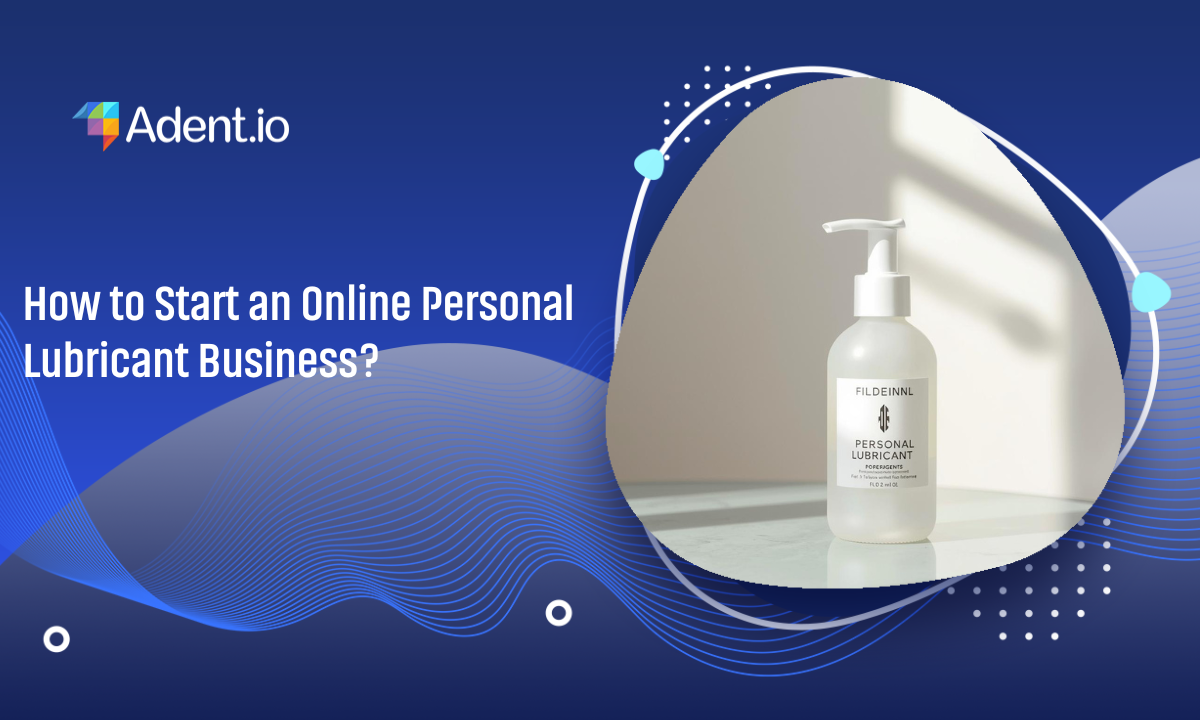Build a premium lube business online in minutes: Launch with xMarketplace →
Lube has moved far beyond the “bedside drawer accessory” category. Today; it’s a fast-growing wellness asset, engineered with the same precision and sensory intelligence you’d expect from luxury skincare.
The category has matured, the consumers have evolved, and the industry now speaks a new dialect: clean formulations, genderless packaging, biotech ingredients, and sensory performance.
This is no longer a taboo product. It’s a validated, high-margin, globally expanding industry backed by wellness data, medical demand, and shifting cultural norms.
If you’ve been exploring how to start a personal lubricant business that commands attention and drives loyalty, you’re entering the market at the perfect inflection point. Consumers aren’t buying “lube”; they’re buying:
- Heightened experience,
- Functional wellness,
- And a brand that aligns with how they want to feel.
Why Start an Online Lubricant Business?
According to Grand View Research the personal lubricant business market is projected to reach $2.77 billion by 2030, a ~9.76% CAGR.
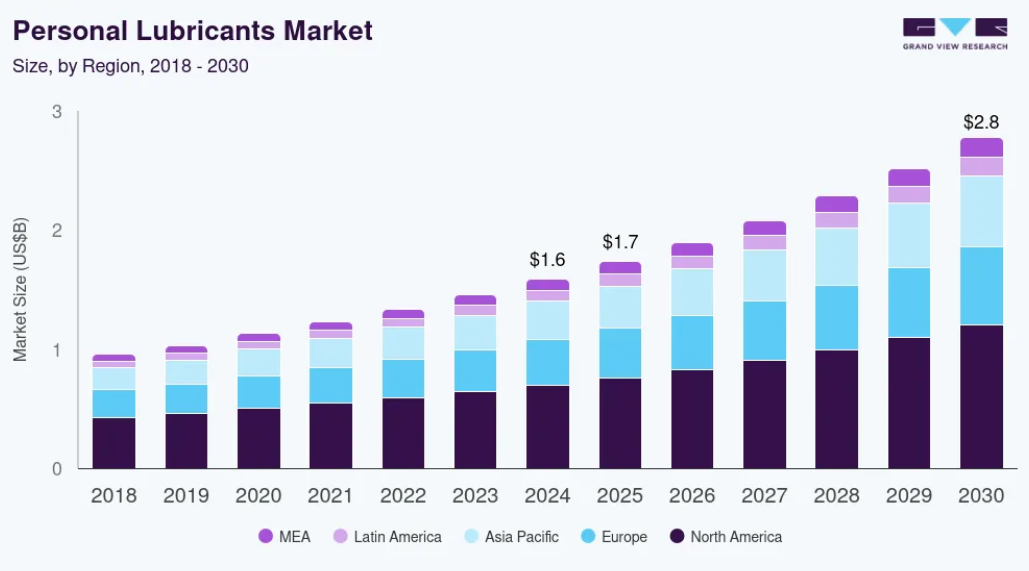
E-commerce is already dominant: proving that consumers are choosing screens over aisles when it comes to intimacy products. What’s driving the momentum?
- Untapped Demographics: Men’s wellness (yes, lubes for men), menopausal women (vaginal dryness meets intimate care), and queer-inclusive formulations.
- Innovative Formats: Organic, vegan, CBD-infused, gender-neutral packaging. These aren’t gimmicks, they’re signals of authenticity.
- Positioning Shift: From “bedroom secret” to “everyday wellness accessory”. The new consumer views intimacy as part of self-care.
Why Online is Better Than Retail for Adult Products?
Here’s why the digital channel wins for your lubricant business:
- Discretion Matters: Buyers prefer private checkout, subtle packaging, home delivery. Brick-and-mortar loses on that.
- Global Reach, Low Overhead: An online store gives you access across geographies without the cost of retail storefronts.
- Data-Driven Marketing: You can test messaging (vegan, CBD, inclusivity), segment audiences (queer, menopausal, men’s), optimize conversions.
- Subscription & Affiliate Models: Digital opens recurring revenue (monthly lube bundles), affiliate partnerships (wellness influencers) and marketplace integrations (wellness marketplaces)
How to Start an Online Personal Lubricant Business?
Breaking into the lubricant market starts with knowing exactly who you’re serving and why your product should exist for them.
Step 1: Research & Identify Your Target Market
Your first move: stop thinking “everyone” and start thinking micro-niche.
- Pleasure-Focused: Couples, toy users, adventurous markets.
- Health-Focused: Men’s wellness (lubricants for erectile support, longer sessions).
- Medical-Use: Menopausal dryness, post-surgery, dyspareunia.
- Eco-/Clean-/Vegan-Conscious: Green formulas, minimalist branding, safe-for-sensitive-skin.
Note: Each segment demands different ingredients, tone, packaging and marketing.
Use Online Tools for Market Signals
Don’t guess, check the data.
- Google Trends: Look up “water-based lubricant”, “silicone lubricant”, “lubricant for men”, “oil based lubricant”. Identify rising interest.
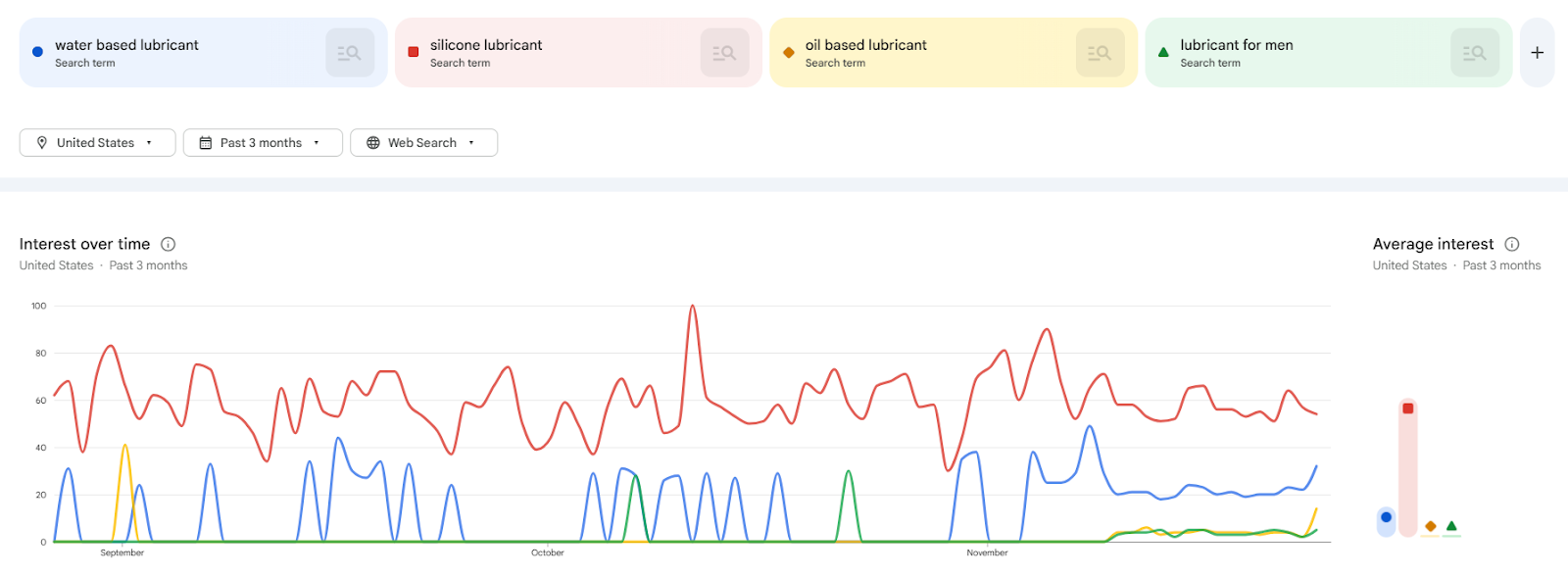
- Keyword Tools (Ahrefs, SEMrush): Look for keywords like “best vegan personal lubricant, CBD lube, glycerin-free lube”. These searches tell you exactly what people want and exactly what competitors aren’t addressing properly.
- Product Research Platforms (Jungle Scout, Helium 10): Review what’s selling on Amazon/e-commerce, which products have strong reviews and volume.
Say you spot a spike in searches for “vegan lubricant” or “lubricant for menopausal women” that’s your cue to claim the space.
Also check competitor behaviours:
- What ingredients do they highlight? (E.g., “paraben-free”, “glycerin-free”, “CBD infused”)
- Packaging & pricing: premium vs budget.
- Brand tone: Medical? Sexy? Wellness oriented?
Competitor Checklist
Run this short audit on 5-10 brands in your niche:
- Ingredient Transparency: Do they list exact percentages? Are key claims backed by certifications?
- Packaging & Design: Is it luxury (glass bottle, minimal design) or commodity (plastic, bold colours, low price)?
- Pricing: Entry-level vs premium. What’s your target margin?
- Brand Tone/Voice: Inclusive? Gender-specific? Unapologetic? Wellness-centric?
- Distribution & Messaging: Online only? Retail? Subscription?
From your audit ask: “Where am I stronger?” “What can I do differently?”
Why This Step Matters
Because when you ask yourself how to start a personal lubricant business, this is the foundation. If you skip it, you’ll end up generic and unnoticed. If you nail it, you’ll build a brand that stands out and resonates.
You’ll know who you are, who you serve, and how you speak. That clarity delivers everything else: product formulation, packaging, pricing, marketing.
And when you launch, you’re not hoping someone buys, you’re saying, one person will buy. Because you built for them.
Step 2: Legal, Compliance & Licensing Requirements
When you think about starting your personal lubricant business, most blogs stop at “pick your formula, find a supplier.” That’s rookie advice. The real test begins here, the legal maze that separates brands that last from those that vanish.
FDA Classification: Cosmetic vs. Medical-Grade Lubricants
In the U.S., your entire compliance strategy depends on how your product is classified.
| Type | Definition | Regulatory Body | Examples |
| Cosmetic Lubricants | Used for pleasure, comfort, or hydration without therapeutic claims. | FDA’s Centre for Food Safety & Applied Nutrition (CFSAN) | Water-based, silicone, or, natural lubricants marketed for personal pleasure. |
| Medical-Grade Lubricants | Marketed for disease prevention, fertility use, or medical procedures. | FDA’s Center for Devices & Radiological Health (CDRH) | Fertility gels, vaginal moisturizers, or lubricants labeled for medical treatment. |
If you’re positioning your brand as a wellness or pleasure enhancer, you’ll likely fall under the cosmetic category, meaning fewer regulatory hurdles. But if your label reads “for medical use,” “fertility-friendly,” or “pain-relief formula,” you’re in medical device territory (Class II). That demands:
- FDA 510(k) premarket notification.
- Good Manufacturing Practices (GMP) certification.
- Stability and microbial testing reports.
Labeling Rules
Consumers read labels. Regulators audit them. A compliant label signals credibility and keeps your business safe.
Your lubricant label should include:
- Full Ingredient List: In descending order by weight. Highlight “glycerin-free,” “paraben-free,” or “vegan” claims only if validated.
- Intended Use & Directions: Clear application and usage instructions.
- Warnings & Disclaimers: “For external use only,” “discontinue if irritation occurs,” “keep out of reach of children.”
- Manufacturer or distributor name & address.
- Batch number and expiration date.
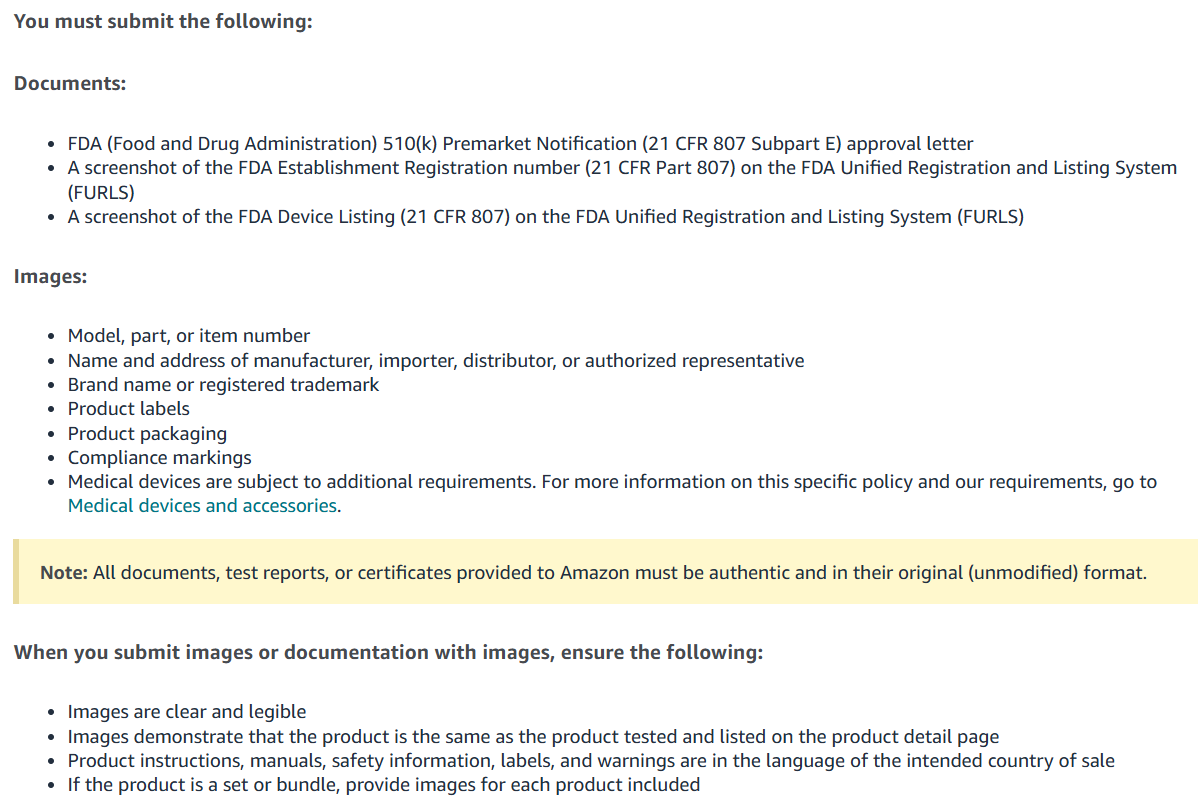
If you’re exporting or selling adult products on platforms like Amazon or Shopify, double-check compliance with EU’s Cosmetic Regulation (EC 1223/2009) and U.S. Fair Packaging and Labeling Act (FPLA).
Import/Export & Adult E-Commerce Regulations
Cross-border lubricant sales are rising, but customs and payment processors aren’t always friendly to adult-tagged goods.
Here’s what to prepare:
- Customs Classification: Register under HS Code 3307.90 (“Cosmetic or Toilet Preparations”) unless medical-grade.
- Import Certificates: If medical-grade, secure a Free Sale Certificate and product dossier.
- Restricted Ingredients: Avoid banned preservatives or fragrances per your target market’s regulation (e.g., EU Cosmetic Directive).
- Adult- Commerce Compliance: Any online store offering explicit marketing must include age-verification gates (18+) and content disclaimers in accordance with local laws.
Data Privacy & User Protection
Data privacy is as critical as product purity. Lubricant and adult-wellness sites handle sensitive user data, name, age, sometimes sexual preference. Mishandle it once, and your brand’s reputation dies.
Comply with:
- GDPR (EU): User consent banners, right-to-forget, encrypted payment data.
- CCPA (California): Disclose how you collect and share data.
- Secure payment gateways: Partner with processors supporting adult or restricted categories (SegPay, Paxum, CCBill).
Business Licensing Essentials
Register your company before you mix your first batch.
- Business Entity: LLC or Corporation for liability protection.
- Seller’s Permit: For state tax compliance.
- FDA Registration (if applicable): For manufacturing facilities or imported products.
- Trademark: Secure your brand name and logo via USPTO.
If you’re outsourcing manufacturing, ensure your partner provides GMP certification and COA (Certificate of Analysis) for every batch. This proof keeps your insurance and marketplace approvals intact.
Step 3: Product Development – Choose the Right Type of Lube
When you’re figuring out launching a personal lubricant business, this is where you stop thinking like a seller and start acting like a chemist.
Before you slap a label on a bottle, you need to decide what kind of pleasure you’re building for.
The Core Types of Lubricants
Let’s break it down:
| Type | Texture & Feel | Best For |
| Water-Based | Lightweight, non-sticky, easy to wash off | Everyday use, toy compatibility, all skin types. |
| Silicone-Based | Long-lasting, velvety, waterproof | Shower play, extended sessions, and luxury lines. |
| Oil-Based | Thick, rich, indulgent | Massage, foreplay, self-care. |
| Hybrid Lubes | Combo of water & silicone | Multipurpose brands and modern “smart” formulations. |
Each formula speaks to a different audience.
- Water-based lubes own the clean wellness crowd.
- Silicone-based ones whisper premium, performance-driven sex.
- Hybrids hit the new-age, science-meets-sensation niche.
Trend-Driven Formulations
If you want to dominate this market, you can’t sell the same gel that’s been on shelves for a decade. Modern consumers crave personalization, purity, and purpose.
Here’s what’s driving product innovation right now:
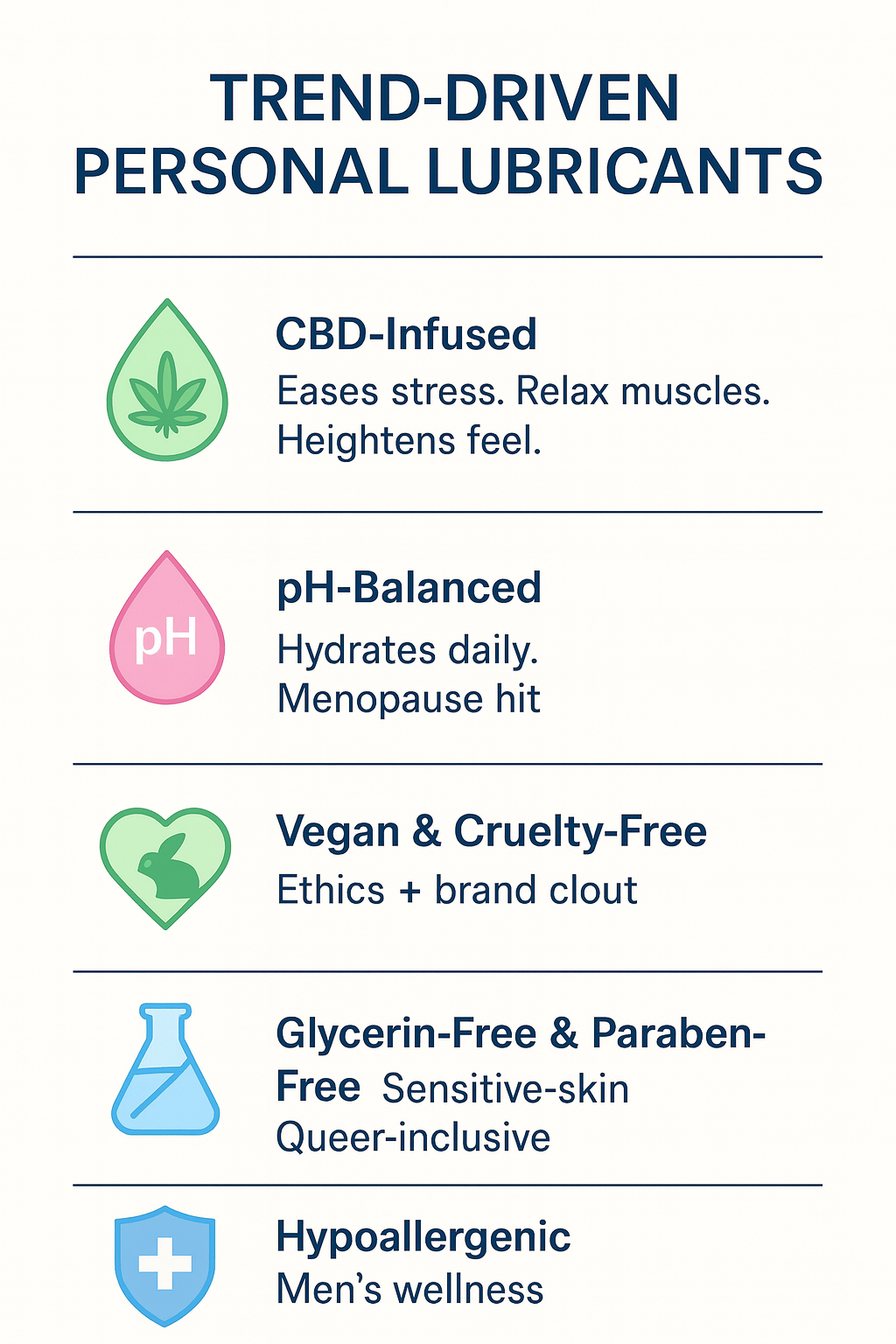
- CBD-Infused Lubes: For stress relief, muscle relaxation, and heightened sensitivity.
- pH-Balanced Lubes: Especially designed for vaginal comfort and daily hydration, a hit among menopausal and wellness-focused users.
- Vegan & Cruelty-Free: Ethical pleasure is the new luxury. Certifications from Leaping Bunny or PETA add brand credibility.
- Glycerin-Free & Paraben-Free: Perfect for sensitive-skin and queer-inclusive brands avoiding irritants.
- Hypoallergenic Options: Growing demand in men’s wellness and medical-grade niches.
Partner with Private Label or White-Label Manufacturers
You don’t need your own lab to create a high-end lube brand. The secret is strategic manufacturing partnerships. Private-label manufacturers already have FDA-cleared bases, stability-tested formulas, and scalability options, meaning you can launch in weeks, not years.
Look for labs specializing in sexual wellness and skincare crossovers. Leading examples:
- Private Label Dynamics – Australia-based, premium natural blends.
- Spa De Soleil – US-based, GMP-certified cosmetic manufacturer.
- Cosmetic Solutions – Custom formulations with vegan, cruelty-free options.
When choosing a partner, ask for:
- Certificates of Analysis (COA)
- GMP certification
- Microbial testing reports
- Ingredient origin transparency
And make sure your NDA is watertight, your formula is your IP.
Sustainability Isn’t a Buzzword, It’s a Strategy
Consumers are tired of plastic guilt. They want intimacy that feels good and does good.
If you want long-term loyalty, design for conscience, not just climax.
Ways to level up:
- Use biodegradable or glass packaging, recyclable caps, compostable labels, or refill pods.
- Use sugarcane-based tubes or PCR plastic for premium eco lines.
- Highlight green supply chains, it adds moral appeal that today’s buyers crave.
Step 4: Branding & Product Identity That Stands Out
In the personal lubricant market, visual language, tone, and emotional resonance matter as much as ingredient lists.
The Tone of Modern Pleasure
The new era of sexual wellness speaks the language of confidence, calm, and care. Your tone should feel intelligent, sensual, and emotionally fluent, not explicit, but evocative. Whether your product is a CBD lube or a water-based essential, your brand voice needs to communicate:
- Empowerment (not taboo)
- Body acceptance (not perfection)
- Science with soul (not sterile health jargon)
The goal is to invite, not intimidate. Take inspiration from leaders like:
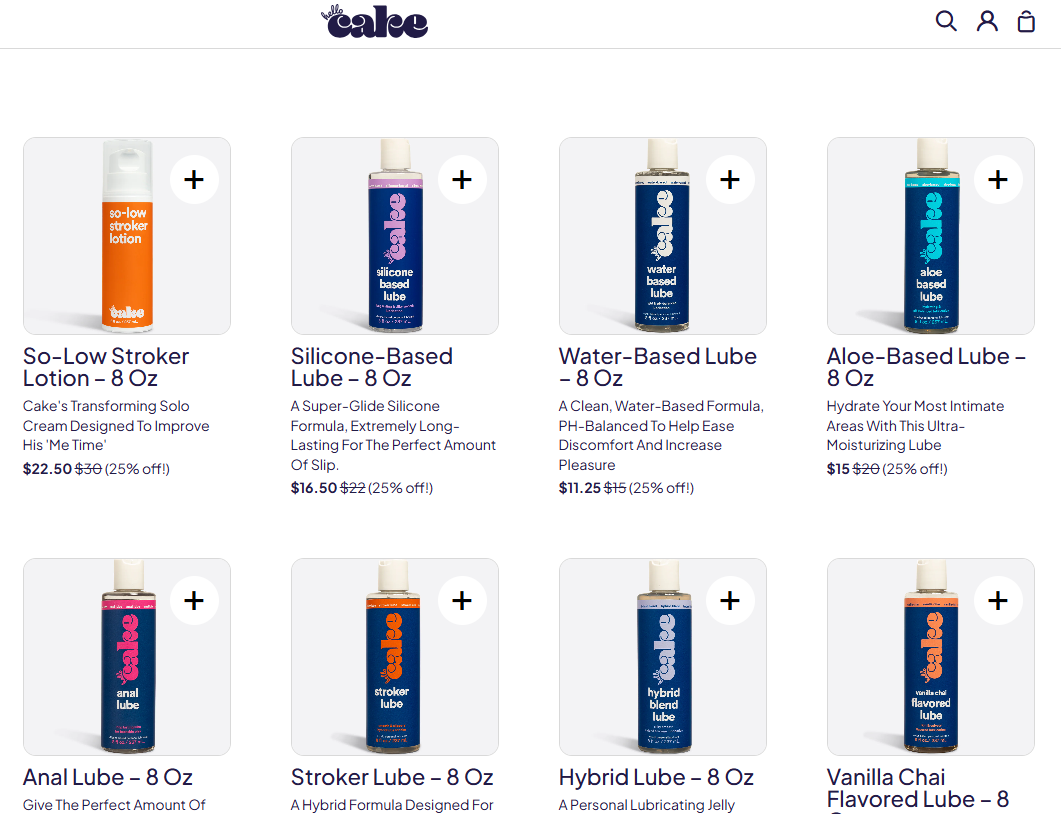
- Cake: Playful yet premium, built an entire brand around humor, inclusivity, and comfort.
- Maude: Minimal, gender-neutral, and poetic. They turned sex care into daily care.
- Dame Products: Feminine energy meets data-backed design.
These brands didn’t sell “sex.” They sold confidence, curiosity, and self-respect and that’s what made them timeless.
Choose Your Brand Archetype and Own the Emotion
Every powerful brand lives in the mind as a story, not a SKU.That’s why picking a brand archetype early gives you emotional consistency across packaging, tone, ads, and user experience.
| Archetype | Core Emotion | Best Fit For |
| The Lover | Sensuality, Intimacy, Allure | Luxury lubes, romantic couples, CBD blends |
| The Caregiver | Safety, Comfort, & Wellness | pH-balanced, medical-grade, menopausal-focused lubes. |
| The Rebel | Disruption, Freedom, Bold Expression | Queer-inclusive, performance-driven, edgy brands. |
Packaging That Speaks Before You Do
In the personal lubricant industry, the first interaction happens through the eyes. Your packaging needs to tell a story in one glance – sensual, safe, and stylish.
Current packaging trends:
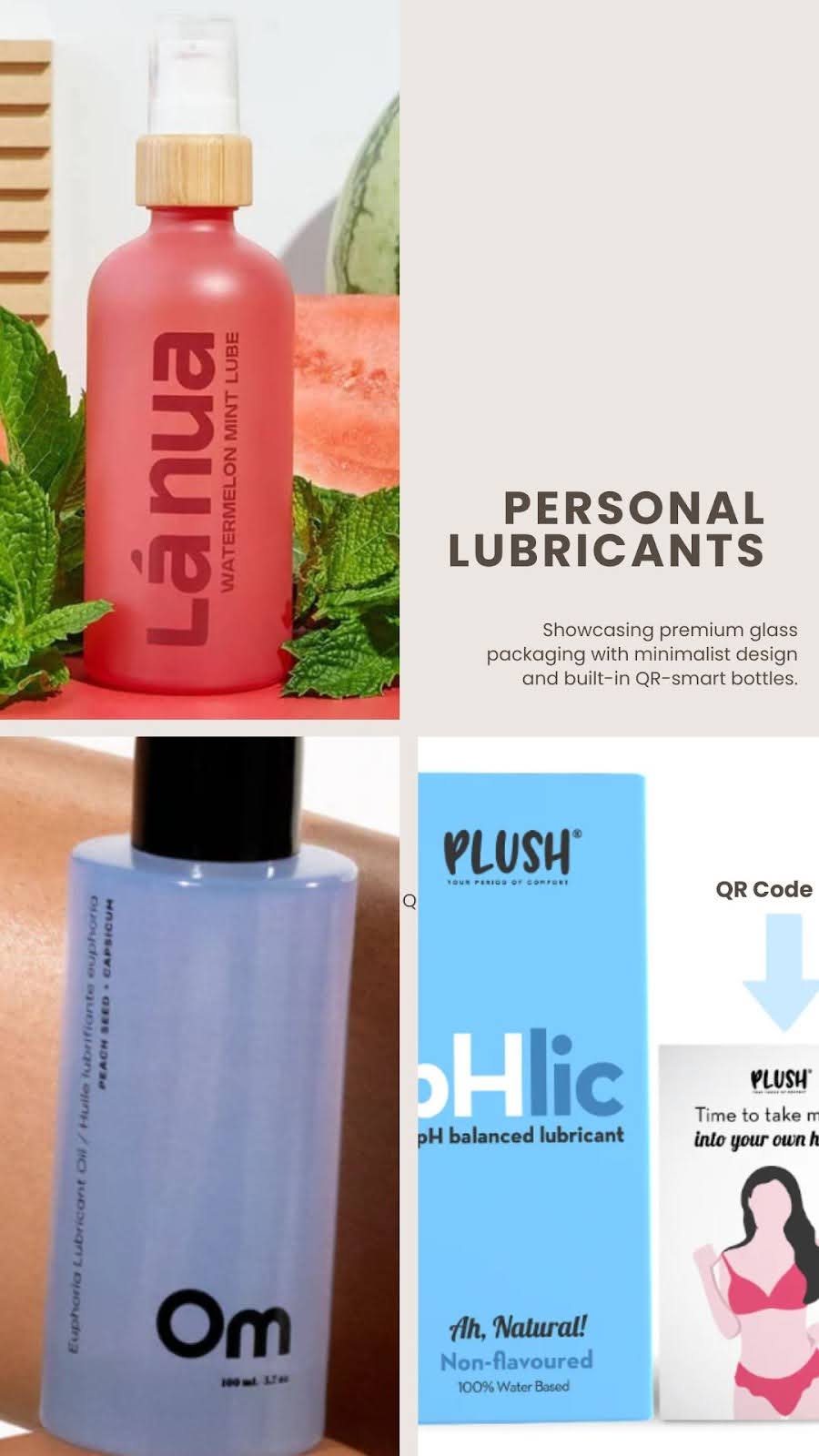
- Matte bottles & soft-touch finishes that feel sensual to hold.
- Minimal typography, single font families, clean spacing, no loud graphics.
- Gender-neutral shades, warm neutrals, forest greens, champagne tones, and stone whites.
- Transparent ingredients like QR codes leading to purity reports, sustainable sourcing, or skin-compatibility data.
Step 5: Sourcing, Manufacturing & Quality Control
Your formula is your reputation. So, investors, retailers, and customers judge you on manufacturing discipline long before they judge your marketing.
Start by sourcing FDA-compliant manufacturers as discussed in Step 3.
Use vetted directories like Thomasnet, FDA Registered Facility Listings, & Made-in-Europe to shortlist labs with proven track records and GMP facilities.
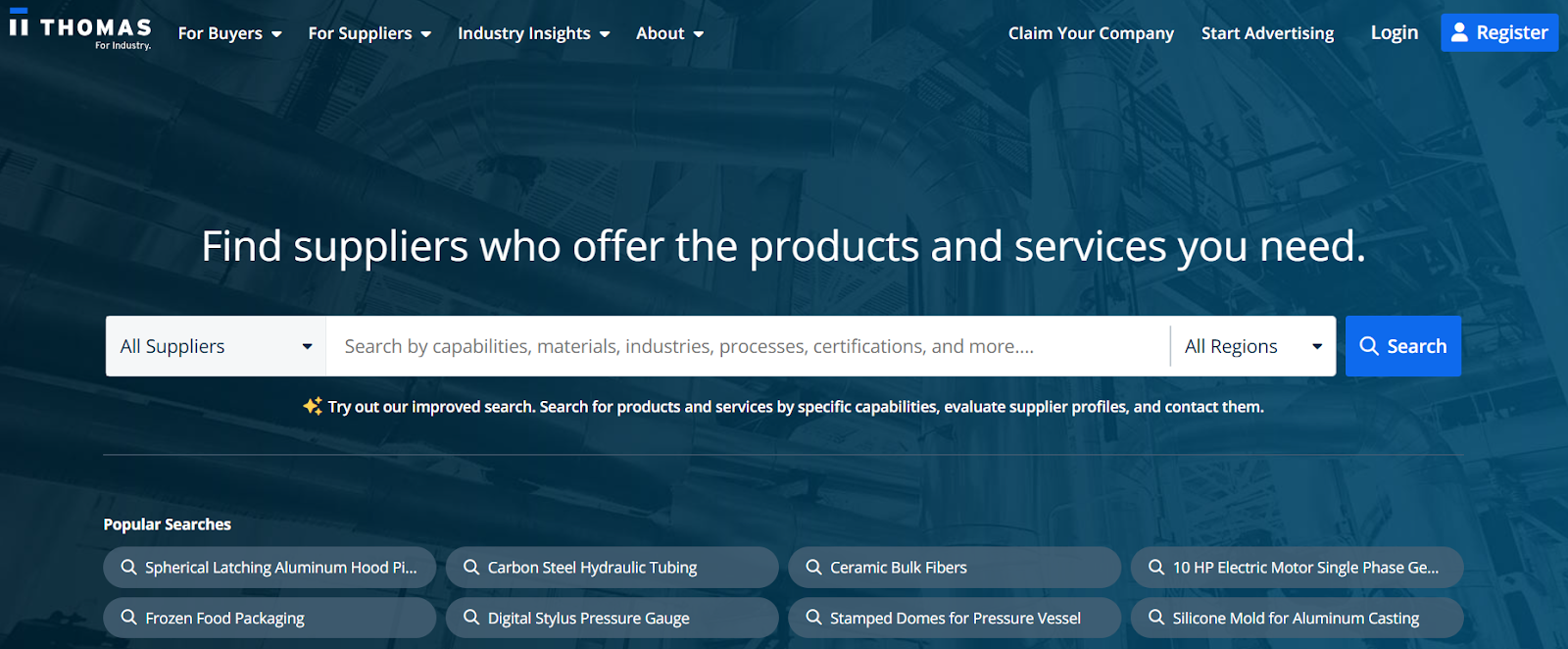
Next, choose your production model:
- OEM (Original Equipment Manufacturer) – You tweak an existing formula developed by the manufacturer. Fastest route, minimal R&D investment,
- ODM (Original Design Manufacturer) – A fully custom formulation designed from scratch for your brand. Perfect for niches like vegan blends, CBD-infused formulas, sensitive-skin products, or premium luxury lines.
- Private Label (White-Label Production) – Ready-made bases with fast turnaround, great for lean startups.
Before any commitment, negotiate MOQs, request samples, and demand transparency on every ingredient. No Samples = No Deal.
Finally, protect your brand with third-party testing, COA reports, ISO 22716, GMP, and microbial safety checks. This isn’t optional, it’s the backbone of trust.
Step 6: Build a Compliant & Conversion-Optimized Online Store
You’ve nailed your formula and brand, now it’s time to build your digital storefront that converts curiosity into cash.
Most founders make the mistake of using generic store builders that flag “adult” content or freeze payments. Don’t be that founder.
You need an ecosystem that’s built for adult wellness, not against it. That’s where xMarketplace by Adent.io comes in. It’s a creator-first ecosystem powered by modern adult ecommerce scripts, giving you everything you need to launch, sell, and scale without roadblocks. It comes with:
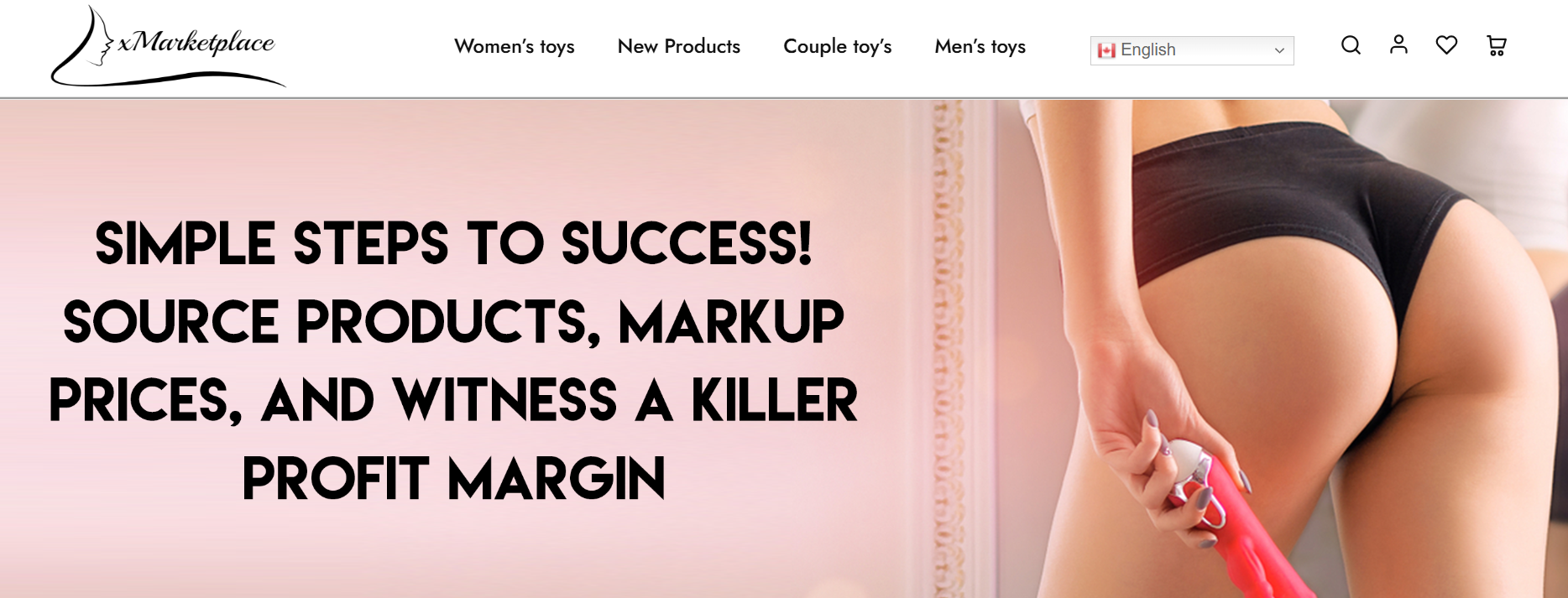
- Integrated age verification tools (18+ auto-filtering & ID checks)
- Verified adult-payment gateways
- Affiliate & payout system for recurring sales
- Built-in community tools to drive fan engagement
📌Pro Tip: Still confused? Take a look into these comparisons for a fast sneak peek, no tab-hopping needed:
Step 7: Pricing, Packaging & Shipping
Here’s the part most founders underestimate – logistics, pricing, and presentation.
Build a Pricing Model That Matches Your Brand Energy
Your pricing strategy determines your market perception before your customer even clicks Add to Cart.
Here are your lanes:
🔹 Premium Tier (Luxury / Boutique Brands)
Target audience: high-income professionals, wellness enthusiasts, and boutique sex shops.
Example pricing: $28 – $45 per 100ml bottle.
Example brands: Maude, Dame Products.
Premium pricing totally depends on storytelling, clean formulas, minimalist design, and a promise of luxury in every drop.
🔹 Mid-Tier (Mainstream, Accessible Luxury)
Target audience: modern couples, inclusive demographics, and subscription buyers.
Pricing: $15 – $25 per bottle.
Example brands: Cake, Woo More Play.
This range wins volume, strong branding, stylish packaging, and approachable luxury vibes.
🔹 Affordable Tier (Mass-Market / Entry Level)
Target audience: younger audiences, digital marketplaces, and bulk orders.
Pricing: $8 – $14 per unit.
Example platforms: Amazon, Walmart Marketplace.
Here, you compete on convenience and packaging, not story.
Subscription Models: Recurring Revenue > One-Time Buyers
The best lubricant brands now run like Netflix – recurring, personalized, and frictionless.
Offer subscription models such as:
- Monthly bundles: “Couples Wellness Box” with 2 lubes + wipes.
- Sampler kits: Let users test mini bottles (water, silicone, hybrid) before committing.
- Refill systems: Eco-friendly pump bottles and refill pouches.
Packaging: Make It Feel Discreet, Modern & Sustainable
Discretion, texture, and sustainability now define purchase decisions in the adult industry.
Here’s how elite brands do it:
- Discreet Outer Packaging: Plain boxes, no adult keywords, return address as your holding company.
- Tactile Appeal: Soft matte finishes, minimal labels, neutral color palettes (think Maude’s beige, Dame’s navy).
- Eco-Materials: Recyclable glass bottles, sugarcane bioplastic tubes, and compostable mailers.
- Tamper seals & Hygiene Proofing: Subtle, sterile, professional.
You want the unboxing to feel like Apple, not Amazon.
📌Pro Tip: Include a “Care Card,” a soft-touch insert that educates users on lube types, usage safety, and storage. Subtle education builds trust and repeat sales.
Global Fulfillment & Shipping Partners That Handle Adult Goods
Most couriers will happily ship books, not lubricants. You need fulfillment partners who understand compliance, customs, and discretion.
Trusted fulfillment & logistics partners for adult and wellness products:
- ShipBob: Handles discreet labeling, strong US & EU coverage.
- Easyship: Dynamic shipping rates, global compliance filters for restricted goods.
- Fulfillment: Experienced with regulated consumer wellness products.
- Floship: Ideal for scaling international subscription orders.
Step 8: Marketing & SEO Strategy for Adult Products
When you ask how to start a personal lubricant business that actually scales, understand this: your marketing engine is your oxygen. Without it, even the best formula dies quietly in the corner of the internet.
Selling adult products in the market is competitive, rule-heavy, and algorithm-sensitive, but if you know how to play the system, you win big.
Start with SEO. Target high-intent keywords like water-based lubricant, lube for sensitive skin, vegan lube, and CBD personal lubricant. Create long-form, medically accurate, wellness-driven content because Google rewards expertise in this category.
Build topical clusters around intimacy education, sexual wellness, pH-safety, and ingredient transparency.
On social media, you’ll need precision. Meta allows educational intimacy content, not explicit positioning. TikTok rewards wellness tips and storytelling, not product shots. Reddit (r/sex, r/sexualhealth) is your underground growth channel – raw, honest, and conversion-friendly.
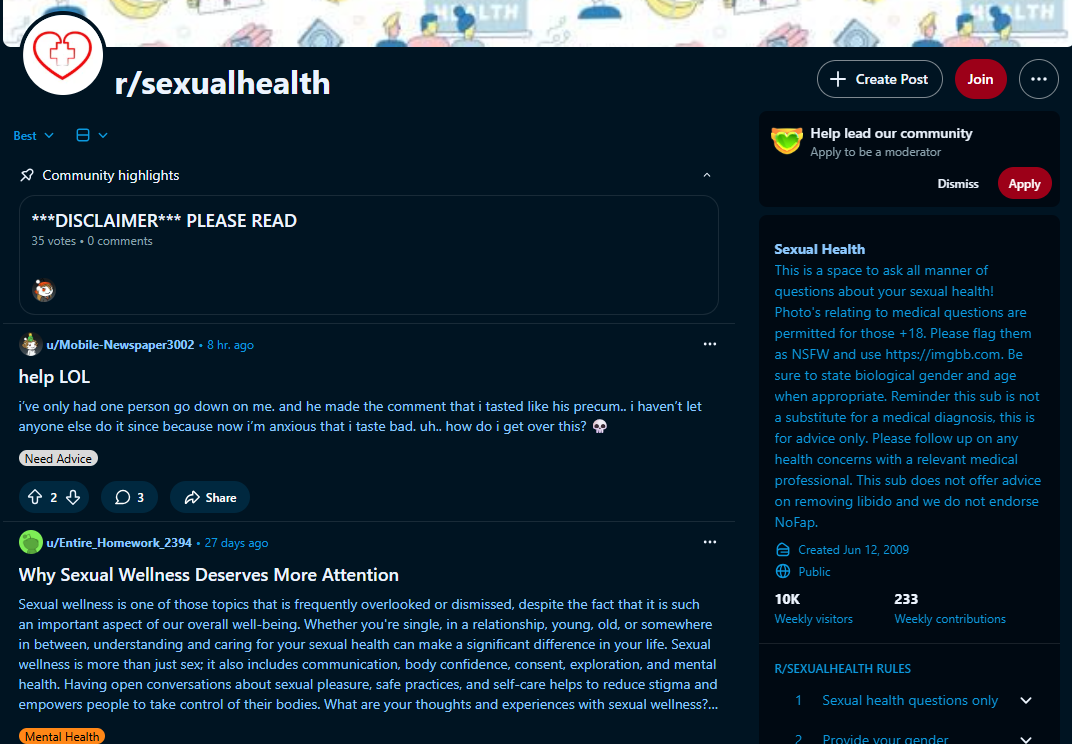
And don’t forget adult-aligned platforms like LoversStores, Xbiz, and SexTech communities, where your brand can speak without constraints.
Collaborate with influencers in body positivity, LGBTQ+ wellness, and pelvic health, these niches convert because they speak the language of trust and self-care.
Then build the engine that keeps money circulating: email flows, loyalty loops, and a private community for education, product drops, and subscriber-only bundles.
This is how you dominate.
Step 9: Distribution Channels & Expansion
Start by plugging into high-traffic adult marketplaces like Lovehoney, Adam & Eve, and curated wellness boutiques that favor clean, premium intimacy products. These platforms give you instant trust and immediate visibility.
Next, enter the professional ecosystem. Sex educators, pelvic-floor therapists, OB-GYN clinics, and intimacy coaches are powerful wholesale partners, credibility meets volume.
Boost your margins by pairing your lube with essentials like wipes, toys, and condoms to position your brand as a full-spectrum pleasure solution.
And once that foundation is stable, expand laterally. Hotels, spas, wellness retreats, boutique travel brands are quietly upgrading to modern intimacy amenities. This is the moment where a “small lube brand” evolves into a global supplier, not by shouting, but by being everywhere intimacy is elevated.
Step 10: Scaling, Analytics & Long-Term Growth
Once your lubricant brand starts moving, the real game becomes data mastery. Track everything that signals loyalty and friction, repeat purchase rate, subscription retention, LTV, and cart abandonment. These numbers tell you where desire flows and where it leaks.
For aggressive scaling, build a growth engine around automated funnels, personalized upsells, and replenishment reminders. The top brands in the intimate wellness space win because they predict behavior, not react to it.
Stay ahead by adopting the trends already redefining how to start a personal lubricant business today:
- AI-driven personalization (smart product quizzes, tailored bundles).
- Sustainable, bio-based ingredients that align with modern clean wellness values.
- Virtual intimacy integrations, like interactive education, and digital sampling.
Final Thoughts
You’ve got the guide, the market is begging for innovation, and the opportunity is hotter than ever. This is your cue to stop watching and start owning. The lube economy isn’t slowing down, it’s exploding, reshaping how the world touches, feels, and explores itself. So tell me… what are you waiting for? Permission? Fate? A sign?
When you’re ready to own your category with frictionless payouts, bulletproof compliance, and technology built for scale, opt for xMarketplace by Adent.io. It gives you the foundation you need, supported by premium adult ecommerce website development, and high-converting sex toys website design services to build an empire that lasts.
FAQs Related to Personal Lubricant Business
1. What Pricing Models Work Best for Personal Lubricant Business?
Combine premium and affordable tiers. Subscription boxes and sampler kits boost loyalty and predictable revenue. Tailor pricing to your niche audience.
2. What Startup Costs Should I Expect?
Startup costs for a personal lubricant business typically include product development, compliance, manufacturing, packaging, e-commerce setup, marketing, and logistics. Expect $10K – $100K+, depending on scale and customization.
3. What Packaging Sizes Sell Best?
Pilot small sizes (1 – 2 oz) for samples and travel; larger bottles (4 – 8 oz) for regular users. Variety maximizes convenience and trial.
Hi
Start Growing Your Dream Business
with Us!
Nathan
Head of Technical Support at Adent.io
Nathan leads Adent.io’s Technical Support team with a commitment to excellence, ensuring clients receive the help they need to succeed with their adult website platforms. A graduate of Chulalongkorn University with years of experience in technical support, Nathan combines his education with a deep understanding of Adent.io’s ready-made adult scripts, providing responsive, reliable assistance tailored to each client’s needs.

